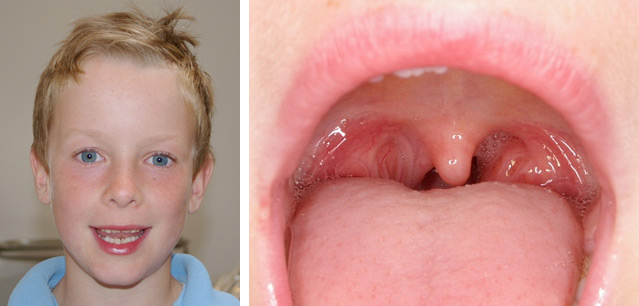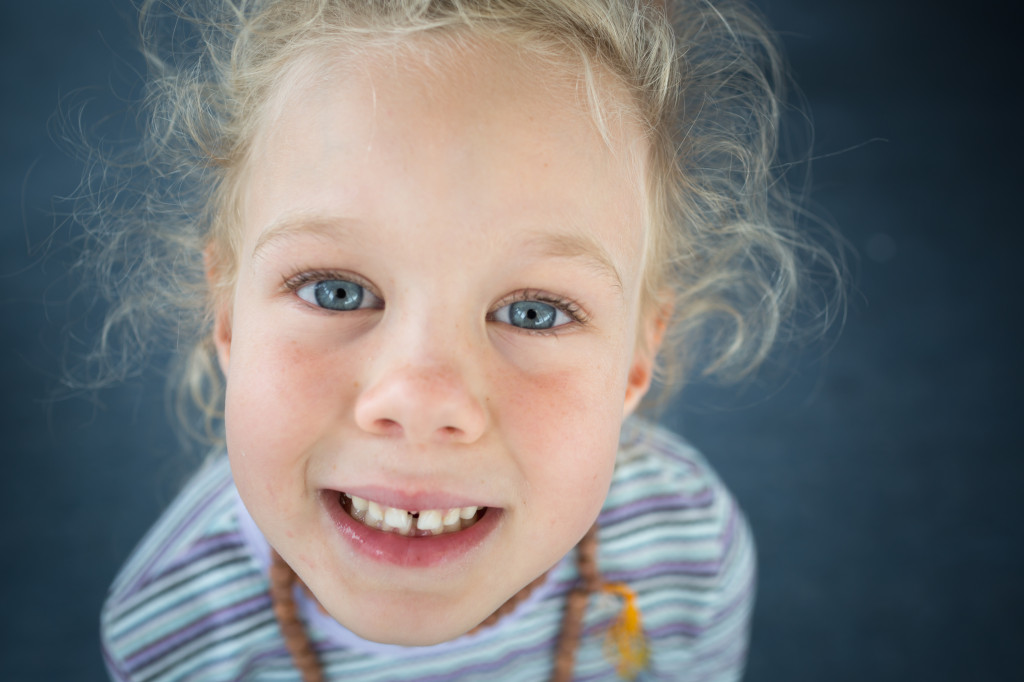Snoring and Obstructive Sleep Apnoea (OSA) in children is an often under recognised and under treated condition that can have serious implications to growth and cognitive (thinking and learning) development. In particular, orthodontic and growth abnormalities of the face caused by snoring or OSA are commonly overlooked or ignored despite their impact on long-term health outcomes into adulthood.
Many parents however may not even be aware their child has a snoring or OSA issue, as often children can be quite silent when their airway is becoming restricted or obstructed compared with adults. Importantly, children are not ‘little adults’ and therefore the sleep breathing physiology and symptom presentation can be markedly different for children with snoring and OSA issues compared with adults.
The video below demonstrates a child who suffers from sleep apnoea. Of particular importance is the abdominal thrusting that occurs as the airway is completely blocked and the diaphragm contracts repeatedly in an attempt to overcome this blockage and re-establish normal breathing. Half way through the video, the child is able to take a few deep breaths before his airway immediately blocks again, the diaphragm starts contracting, and thereby repeating the sleep apnoea cycle.
Symptoms of snoring and OSA in children vary in presentation depending on the age of the child and often it is not until the child is able to voice their symptoms, that a diagnosis of snoring and OSA is made. The second video shows a younger child with snoring and sleep apnoea. The cycle of breathing difficulty, snoring, and cessation of breathing is quite obvious. Part way through the video, the child’s eyes are partly opening, indicating a rising level of consciousness as the brain attempts to awaken the child to improve muscle tone and therefore breathing. This constant level of brain arousal is a significant cause for waking and daytime tiredness in both children and adults.
Below is a table outlining the most commonly reported symptoms by presentation in varying child age groups.
Common Symptoms of Snoring and Sleep Apnoea in Children
| Infants 3 – 12 mo | Toddlers 1 – 3 yo | Preschool aged children | School aged children |
| Disturbed sleep cycle with repetitive crying | Agitated or disrupted sleep | Agitated sleep | Agitated sleep |
| Noisy breathing | Noisy breathing or snoring | Regular snoring | Regular, heavy snoring with possible witnessed apnoeas |
| Night sweating | Night sweating | Night sweating | Night sweating |
| Poor suckling and breastfeeding ability | Crying or sleep terrors | Abnormal sleeping positions | Abnormal sleeping positions |
| Poor or failure to thrive | Daytime fatigue | Insomnia | Insomnia |
| Witnessed apnoeiac episodes (stop breathing) | Witnessed apnoeiac episodes (stop breathing) | Sleep walking and/or talking | Sleep walking and / or talking |
| Repetitive ear aches or respiratory infections | Repetitive ear aches or respiratory infections | Persistent bed wetting | Persistent bed wetting |
| Risk of SIDS | Mouth breathing | Mouth breathing | Mouth breathing |
| Poor eating habits | Daytime tiredness | Daytime tiredness and need for regular naps | |
| Irritable/aggressive behaviour | Morning headache | Morning headache | |
| Diaphragm contractions | Drooling whilst asleep | Difficulty waking in the mornings | |
| Learning difficulties | Learning difficulties | ||
| ADHD pattern of behaviours: aggressiveness hyperactivity inattention |
ADHD pattern of behaviours: aggressiveness hyperactivity inattention |
||
| Growth delays | Depression symptoms | ||
| Repetitive ear and respiratory infections | Repetitive ear and respiratory infections | ||
| Confusion on waking | Confusion on waking | ||
| Delayed puberty | |||
| Dental problems: – Crossbites – Maloclussion -Overcrowding – Bruxism – Small jaws with narrow / high palate |
The adenoids, tonsils, nasal turbinates, and allergies all have significant impacts on growth and development of the face and jaws and therefore should always be evaluated as a high priority in any child that displays any of the above symptoms. In particular, several studies have shown that in groups of children diagnosed with ADHD, up to 70% were undiagnosed for snoring and sleep apnoea. This finding alone suggests that any child with attention or concentration difficulties that are impacting significantly on their daily function, should at least be assessed for snoring and OSA.
As a child grows, a complex interaction occurs between adequate nasal breathing and growth of the upper and lower jaws in the child, and the first 4 years of life are particularly important in the child if snoring or OSA is present. Abnormal nose breathing, difficulty breathing through the nose, and mouth breathing all lead to changes in jaw and facial development as the early childhood years are when the adult facial structure is already around 60% complete.
Often children can be quite silent when their airway is becoming restricted or obstructed compared with adults
For example, if a child cannot breathe through their nose properly, they will develop a chronic ‘mouth breathing habit’. The child may be also be a noisy eater or cannot chew food with their mouth closed, simply because they cannot breathe through their nose properly. If left undetected or untreated, this can lead to a significant change in the facial development and profile, and cause early dental crowding. The figures below show a young boy with a history of mouth breathing since a baby. He has developed a long face and has early dental crowding and narrow upper and lower jaws as a result. He also has large tonsils.

His younger sister also had large tonsils and was beginning to develop the same long face profile. Both children were referred to an ENT surgeon for a tonsillectomy and are now on an orthodontic recall to assess how their nose breathing will improve their dental crowding and facial development over the coming years before any further interventional treatment is undertaken.
Therefore it is vital that if any child has any of the symptoms tabled previously, has a mouth breathing habit, has any early dental crowding even in the baby dentition, or is considering orthodontics they should always be asked about snoring or possible OSA conditions being present. Typically early intervention includes surgery with an ENT surgeon and / or addressing chronic allergies, followed by upper arch expansion approach to orthodontics. Examination and treatment with an Orofacial Myologist may also be of benefit in reversing any existing functional abnormalities of the tongue, lips, and jaw position during facial development and growth.
Extraction-type treatment in children with a history of snoring and OSA should be avoided at all costs wherever possible, as there are an increasing number of recent studies that strongly suggest this type of orthodontics can significantly worsen snoring and OSA as the child develops into an adult.


